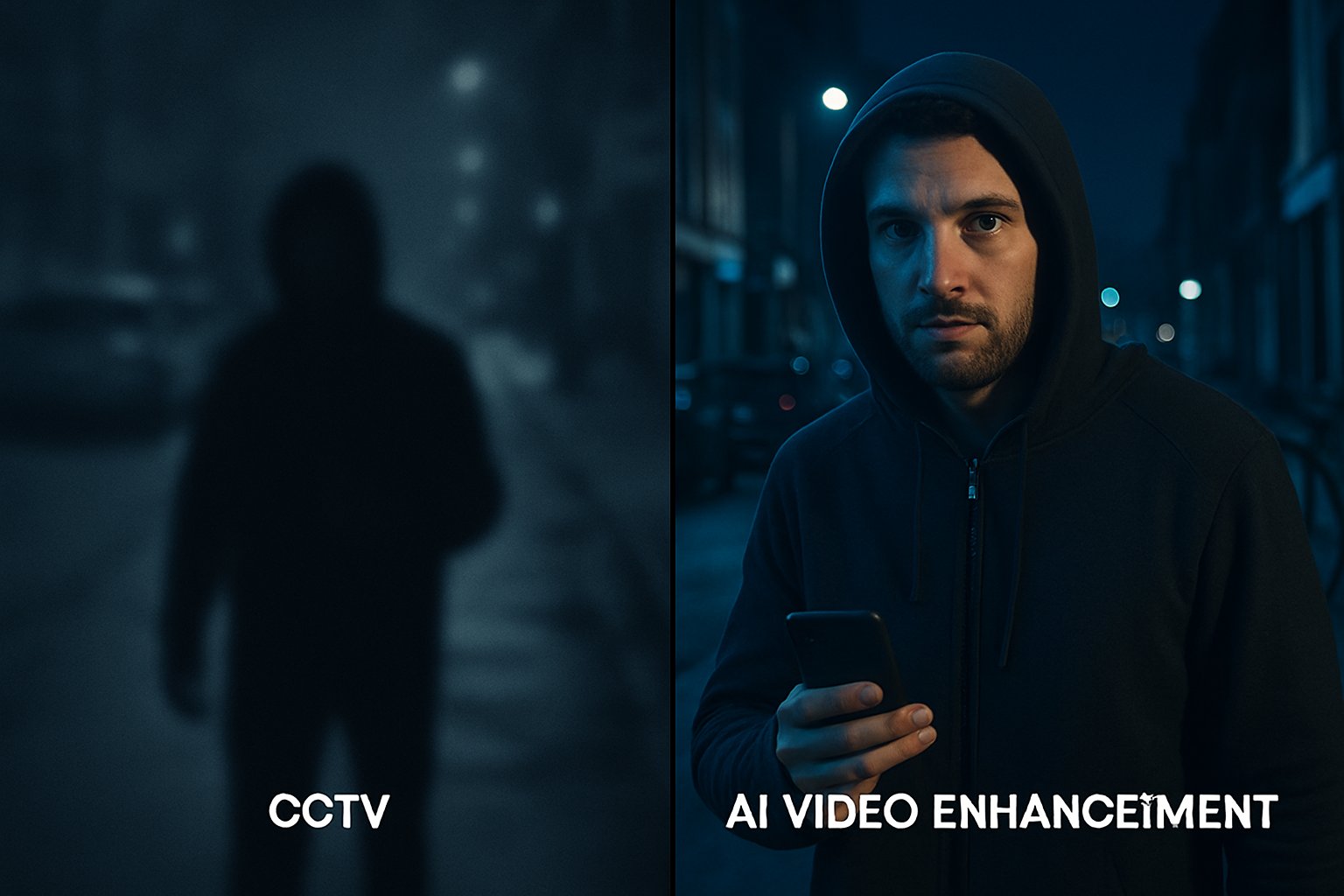
AI CERTS
3 hours ago
AI-Driven Video Enhancement Sharpens Low-Light CCTV Evidence
Moreover, it outlines best practices and strategic recommendations for Security professionals evaluating new tools. Readers will learn how AI delivers low-light clarity without jeopardising evidentiary integrity or public trust.
Low-Light Imaging Challenge
Traditional sensors struggle when photons are scarce. Longer exposure times introduce motion blur, while high gain amplifies noise. Consequently, investigators reviewing night footage often face illegible faces and unreadable licence plates.

Deep learning now attacks the physics head-on. Retinex-inspired networks, multiframe fusion, and transformer denoisers reconstruct missing detail across frames. Furthermore, edge devices embed these models for real-time triage inside citywide Surveillance grids.
Hikvision’s DarkFighter 2.0 exemplifies sensor plus neural processing pipelines marketed for twenty-four hour clarity. In contrast, forensic labs still reserve cautious judgement until independent tests confirm advertised performance.
Low-light capture therefore remains a technical bottleneck. However, AI promises substantial relief, leading us to the core Video Enhancement methods.
Video Enhancement AI Techniques
Modern pipelines start with multiframe alignment to gather more signal per pixel. Subsequently, convolutional or diffusion models denoise and sharpen the aggregated frames.
Generative super-resolution then performs facial upscale. Nevertheless, researchers warn that hallucinated pores can mislead juries if presented as ground truth.
Forensic vendors therefore separate classical restoration from imaginative synthesis within their toolkits. Additionally, Amped FIVE logs every filter to preserve chain-of-custody transparency.
- Multi-frame fusion for noise reduction
- GAN-based colour relighting
- Super-resolution with confidence maps
- Automated object tracking using Computer Vision cues
- Confidence scoring for Video Enhancement outputs
These layered steps create the current Video Enhancement stack. Consequently, market adoption statistics reveal growing demand.
Market And Adoption Trends
Analysts estimate the broader video analytics segment will reach USD 22 billion by 2028. Meanwhile, niche forensic Video Enhancement revenues remain below USD 500 million yet climb around ten percent annually.
MarketsandMarkets cites high CAGR driven by urban Security projects and private Surveillance networks. Vendor case studies report review time reductions from weeks to days. However, independent audits lag behind glossy marketing collateral.
Adoption therefore accelerates, especially within resource-constrained agencies. Nevertheless, legal and ethical headwinds threaten unchecked growth.
Legal And Ethical Concerns
Courts demand reproducible workflows before admitting enhanced footage. Consequently, black-box neural networks face heightened scrutiny.
Clearview AI fines illustrate regulatory impatience with opaque biometric pipelines. Additionally, unequal error rates across demographics raise Surveillance bias alarms. Courts increasingly separate legitimate Video Enhancement from untested generative tricks.
Joy Buolamwini advocates precautionary principles until independent fairness metrics improve. In contrast, vendors argue that improved datasets already mitigate early errors.
Evidence integrity also interacts with cyber Security. Cloud processing can expose investigative material to exfiltration or tampering.
Legal friction thus shapes procurement decisions. Subsequently, practitioners focus on operational safeguards that defend admissibility.
Operational Best Practices Adopted
Forensic teams start by duplicating original exports and hashing every file. Furthermore, they run Video Enhancement inside isolated, logged workstations.
Experts recommend side-by-side presentation of raw and processed frames during testimony. Moreover, detailed logs of parameter values assist cross-examination.
- Capture chain-of-custody details immediately.
- Use reproducible Computer Vision algorithms with published papers.
- Validate outputs through independent peer review.
- Store both versions using write-once media for Security.
Professionals can formalise competency through the AI+ Security Level 3™ credential. Consequently, certified analysts gain trust from prosecutors and judges.
Robust procedure therefore protects evidence and reputations. Strategic foresight now becomes essential for diverse stakeholders.
Strategic Outlook For Stakeholders
Municipal CIOs must balance rapid deployment with transparency obligations. Therefore, public dashboards disclosing camera locations and audit metrics can bolster acceptance.
Private businesses embedding Surveillance should negotiate clear data-sharing agreements with law enforcement. Effective Video Enhancement policies will reassure privacy advocates and investors alike.
Meanwhile, vendors that document model performance and allow third-party API inspection will differentiate. Academic labs can aid progress by releasing open low-light benchmarks for objective Video Enhancement evaluation.
Consequently, market growth can continue without sacrificing civil rights.
Strategic collaboration therefore underpins sustainable innovation. The concluding section recaps critical insights and next actions.
Conclusion And Outlook Ahead
AI is undeniably rewriting the night watch. Video Enhancement drives sharper images, faster triage, and stronger leads across Security operations.
However, hallucination risk, demographic bias, and chain-of-custody hurdles demand rigorous controls. Moreover, courts will continue to interrogate opaque models.
Consequently, organisations should embed documented workflows, embrace reproducible Computer Vision algorithms, and pursue continuous training. Readers seeking mastery can pursue the AI+ Security Level 3™ certification and review linked research.
Act today to turn low-light footage into reliable courtroom evidence.



